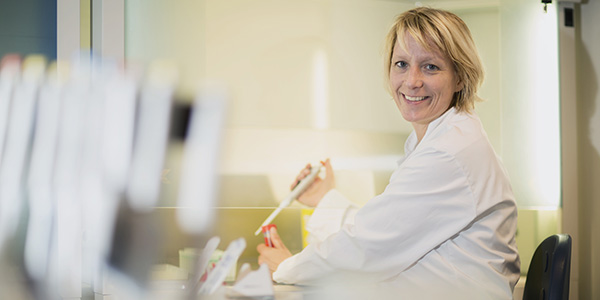Successful cure of HIV infection after stem cell transplantation
- Wits University
An international group of researchers including Wits scientists have identified a third case of HIV infection cured by stem cell transplantation.
Haematopoietic stem cell transplantation for the treatment of severe blood cancers is the only medical intervention that previously cured two people living with HIV.
'Haematopoietic' refers to an immature cell that can develop into all types of blood cells, including white blood cells, red blood cells, and platelets. Hematopoietic stem cells are found in the peripheral blood and the bone marrow and are also called blood stem cell.
An international group of physicians and researchers, including Dr Annemarie Wensing of Ezintsha, a division of the Wits Health Consortium, and Dr Monique Nijhuis in the HIV Pathogenesis Research Unit at Wits, has now identified another case in which HIV infection has been shown to be cured in the same way.

In a study published today in Nature Medicine, the successful healing process of this third patient was for the first time characterised in great detail virologically and immunologically over a 10-year duration.
An infection with the human immunodeficiency virus (HIV) was previously considered incurable. The reason for this is that the virus ‘sleeps’ in the genome of infected cells for long periods of time, making it invisible and inaccessible to both the immune system and antiviral drugs.
The ‘Düsseldorf patient’, a 53-year-old man, is now the third person in the world to be completely cured of the HI virus by a stem cell transplant.
The patient, treated at the University Hospital Düsseldorf for his HIV infection, had received a stem cell transplant due to a blood cancer (leukaemia). As in the cases of the first two patients, named ‘Berlin’ and ‘London’ respectively, the Düsseldorf patient received stem cells from a healthy donor whose genome contains a mutation in the gene for the HIV-1 co-receptor CCR5.
This mutation makes it nearly impossible for most HI viruses to enter human CD4+ T-lymphocytes, their major target cells that cause HIV infection in humans.
Following transplantation, the Düsseldorf patient was carefully monitored virologically and immunologically for almost 10 years.
Using a variety of sensitive techniques, the researchers analysed the patient’s blood and tissue samples to closely monitor immune responses to HIV and the continued presence or even replication of the virus.
More than four years ago, the patient’s antiviral therapy against HIV was discontinued. Ten years after transplantation and four years after the end of anti-HIV therapy, the Düsseldorf patient could be declared cured by the international research consortium.
Clinical virologist Dr Annemarie Wensing says: “We could not detect any complete HIV variants in tissues or blood. HIV immunity also faded away, which shows that the immune system is forgetting about the HIV infection that was once there. This cure means that we do gain insight in the dynamics of the immune systems and the viral reservoirs during cure. The implications are that switching off the CCR5 receptor is a key step in these cures. However, the limitations are that stem cell transplantations cannot be performed on a large scale, so other ways to modify the receptor need to be studied.”
Wensing is an Honorary Professor at Ezintsha, a division of the Wits Health Consortium at Wits University in South Africa, and Assistant Professor at the University Medical Center Utrecht in the Netherlands.
Wensing co-steers the IciStem research consortium with Professor Javier Martínez-Picado from IrsiCaixa in Barcelona. Both the London patient and the Düsseldorf patient are part of the IciStem cohort, which analysed the patients’ materials.
Dr Monique Nijhuis, Honorary Professor in the HIV Pathogenesis Research Unit, School of Pathology at Wits University, and Associate Professor of Virology at the University Medical Center Utrecht in The Netherlands, was involved in the patients’ pathological analysis and was also a co-author of the 2023 Nature Medicine article.

